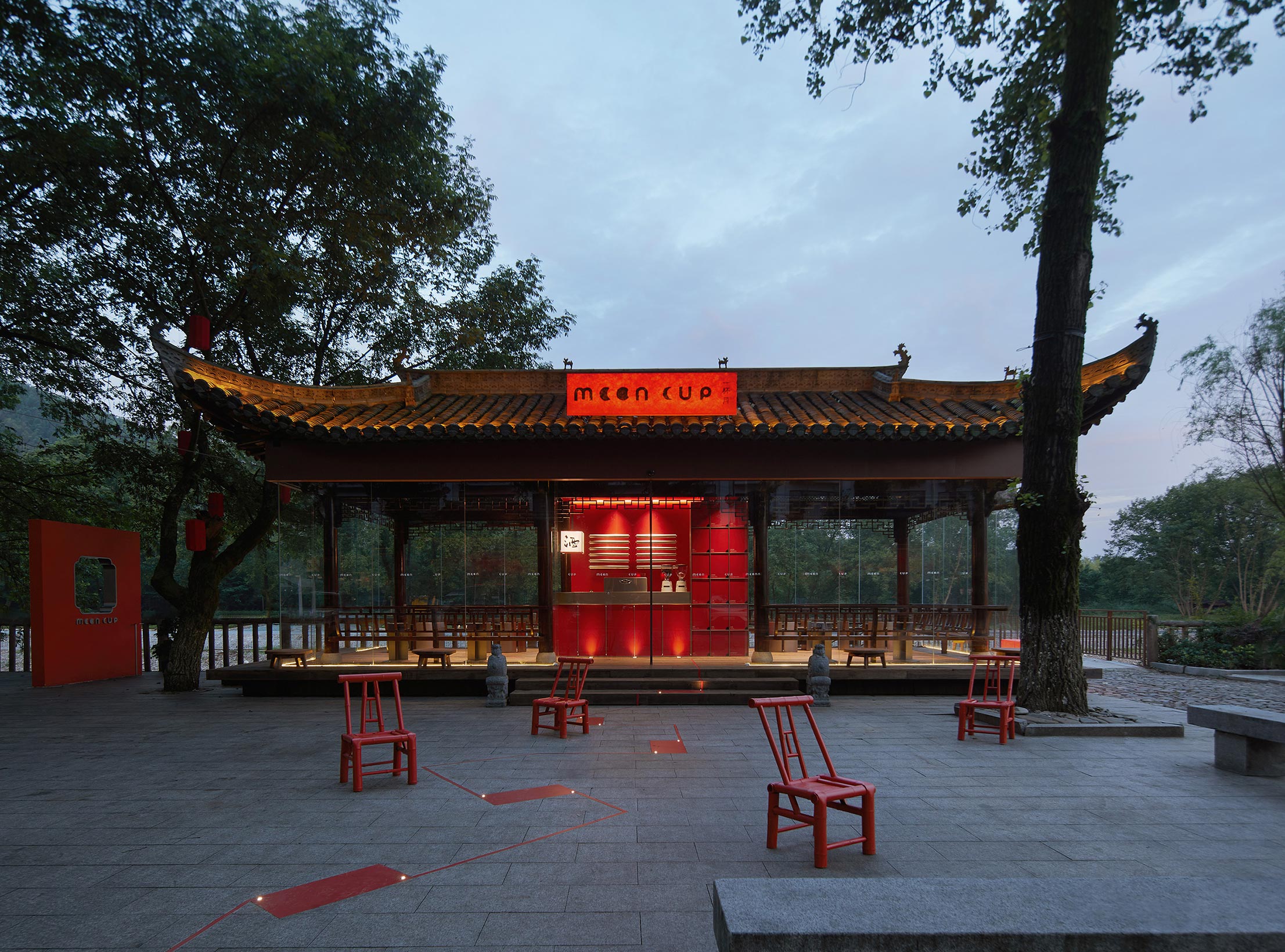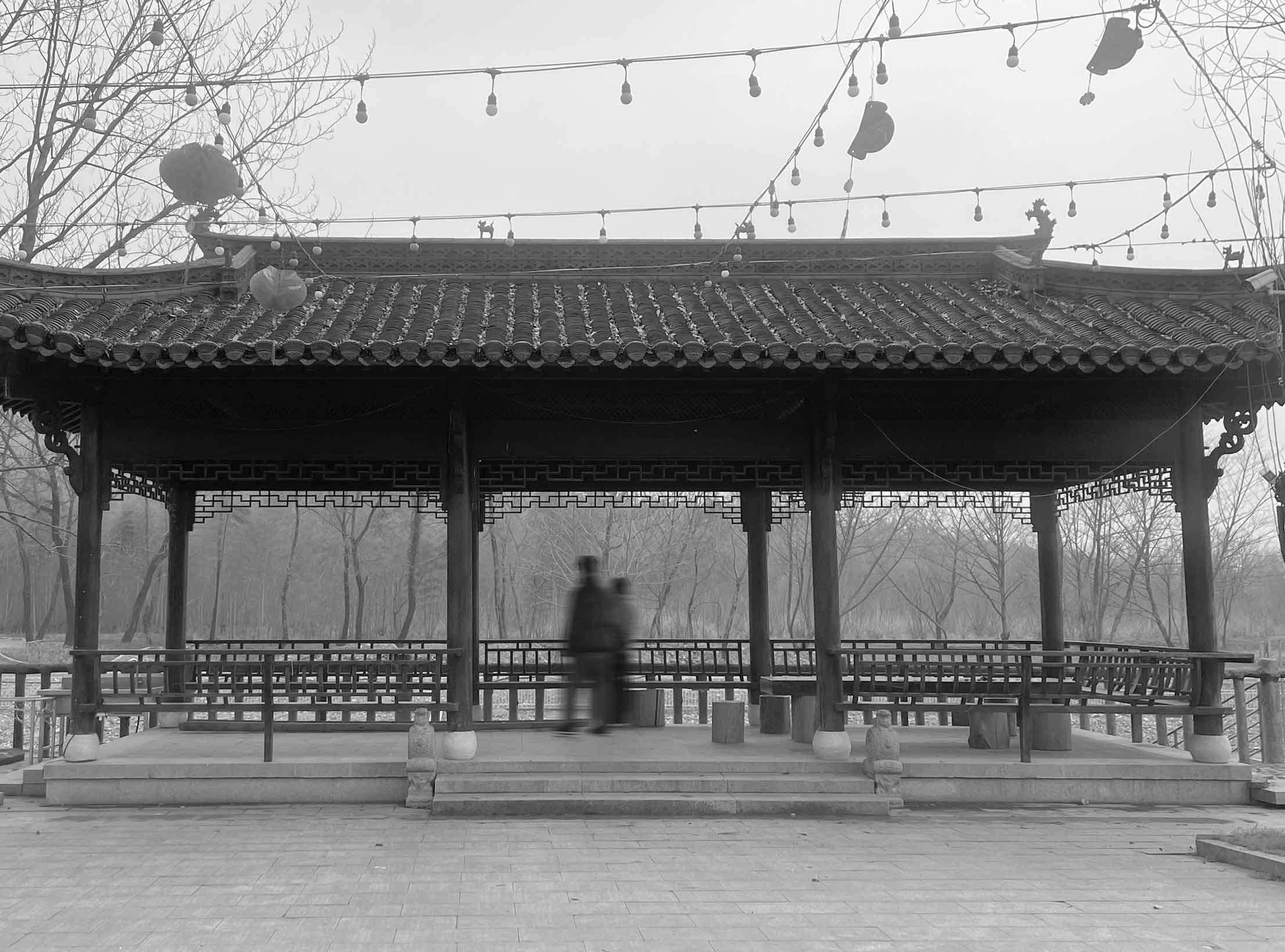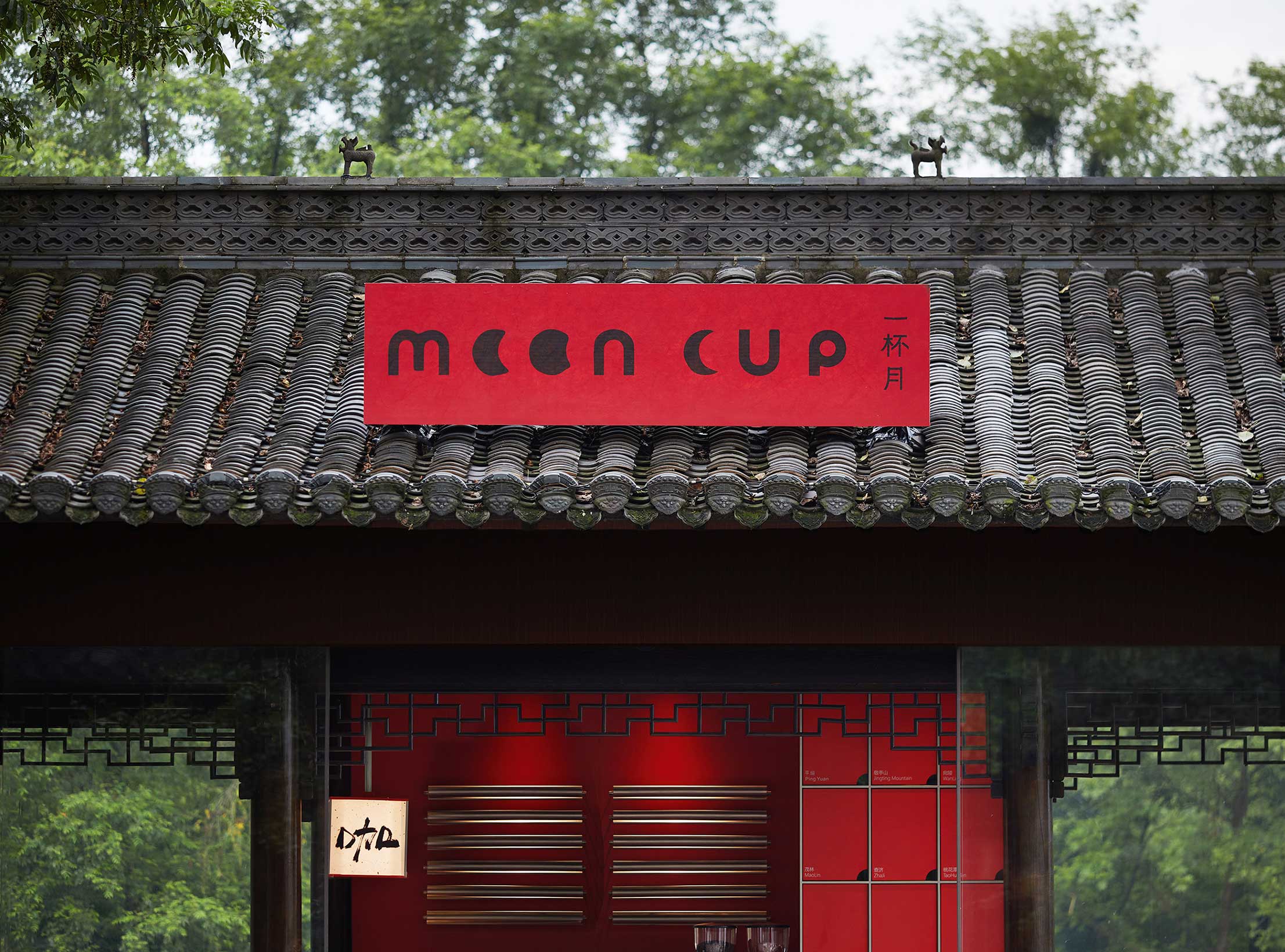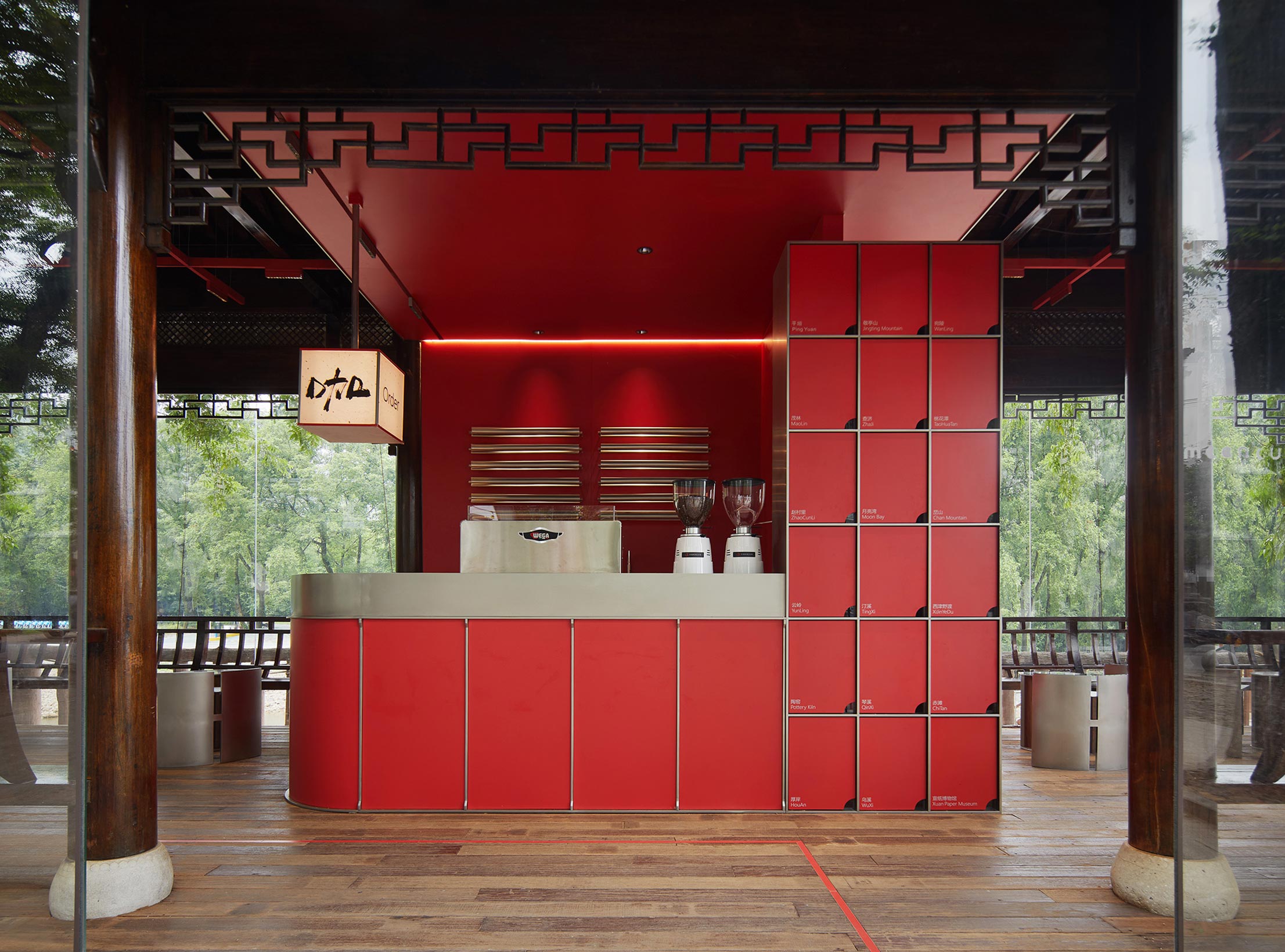《SPACE DESIGN·月下赤亭》
Apr 19,2025
MOON CUP咖啡店位于安徽宣城的月亮湾景区。景区以其得天独厚的戏水区位和318皖南川藏线重要途径点的地理优势,汇聚了五湖四海的旅客。项目地块毗邻景区入口,东侧为休闲广场,西侧为月亮湾流径,景观资源极其优越。空间载体原为业主家中长辈修建的徽派风格景观亭,现经过设计,改造为一座兼具日间咖啡与夜间酒吧功能的复合型商业空间。为了尊重当地风貌以及原有建筑形式,设计团队以最小干预度,让新旧元素、环境与空间实现融合共生,使亭子成为月亮湾景区新的聚焦点。业主在亭子旁的广场上经营烧烤店铺,针对客群做出策略调整,为MOON CUP增添夜晚酒水功能,实现两个业态的循环。徽派景观亭的造型具有强烈的中式属性,因此我们在设计语言上将中式与现代、在地文化与业主潜在需求相结合,将根植于这片土地的文脉以更轻盈、更现代的方式呈现在空间中。
MOON CUP Cafe is located in the Moon Bay scenic spot in Xuancheng, Anhui province. With the geographic advantages of its god-given unique riverside region and its position as an important route point of the 318 South Anhui Sichuan-Tibet line, this scenic spot attracts tourists from all over the world. With a leisure square on the east side, and a flow path of Moon Bay on the west side, this project plot is adjacent to the entrance of the scenic spot, giving it extremely superior landscape resources. The original spatial carrier was a Hui-style landscape pavilion built by the proprietor’s elders, which has been designed and rebuilt into a complex commercial space with the functions of daytime coffee and night bar.With respect to the local style and features and the original architectural form, the design team achieved a fusion symbiosis between the old and new elements, environment and space with minimal intervention, making the pavilion a new focal point of the Moon Bay scenic spot. The proprietor runs a BBQ restaurant in the square beside the pavilion, adjusting his business strategies aiming at the customer group - adding the night drink function to the MOON CUP; realizing the cycle of two commercial activities.The architectural image of the Hui-style landscape pavilion has a strong Chinese style attribute. Therefore, in terms of design language, we combined Chinese-style and modern, local culture with the potential needs of the proprietor, spatially presenting the cultural inheritance rooting in this land in a lighter and more modern way.
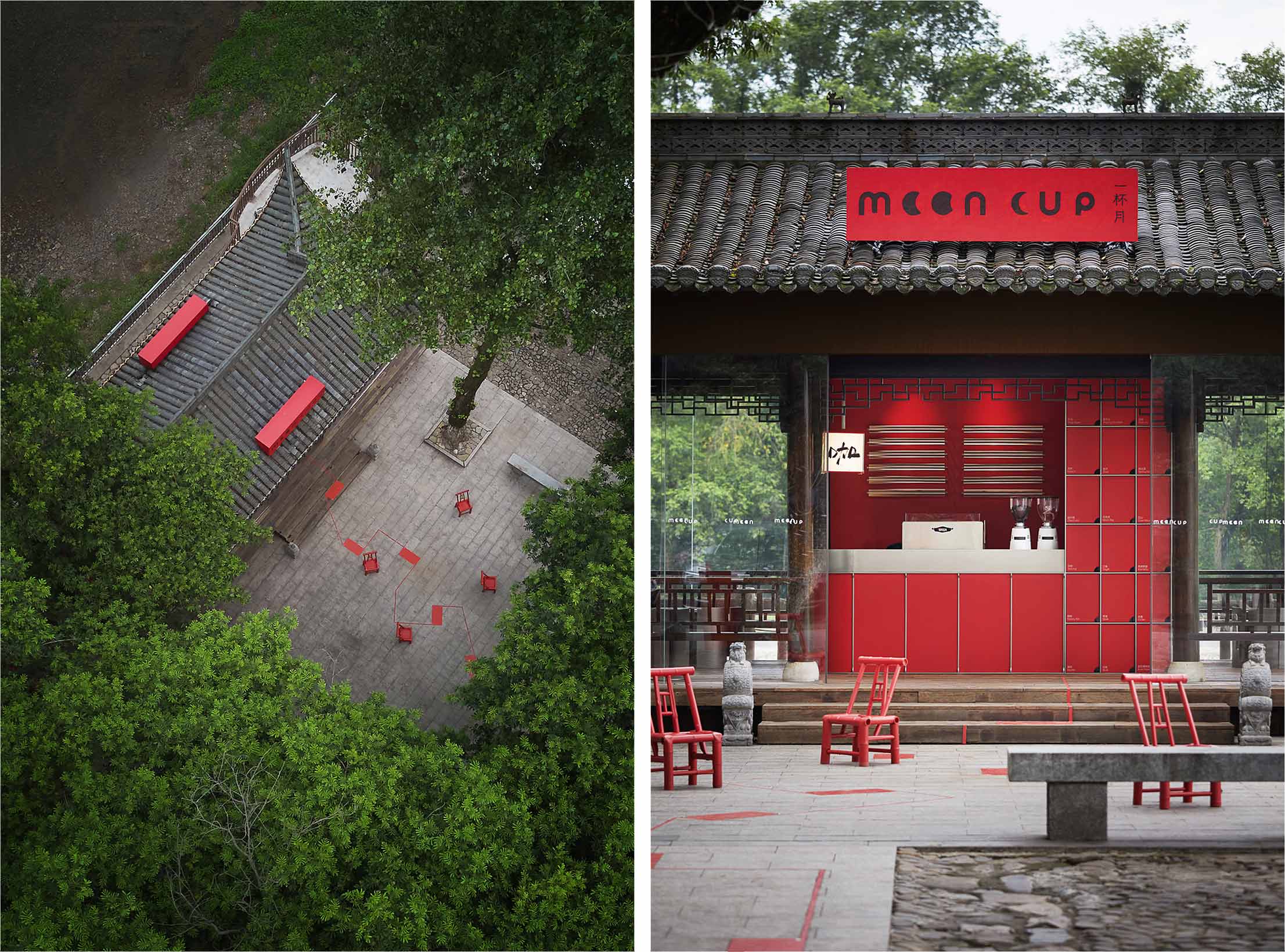
原始景观亭保存较好,无需过多修缮或拆除,仅在原始地面铺上了一层老木地板,使其更加平整,并向外扩800mm作为户外客座区。其余部分用玻璃围合,打造出一座“玻璃亭子”的形式。玻璃的通透属性,保留了西面月亮湾河流的开阔视野与室内外空间的视觉联动,也为室内空间提供了必要的保温性能,解决当地夏热冬寒的气候特点。原始场地的入口有两只石狮子。在传统建筑形式中,石狮子多设置在家门口作为镇宅使用,不出现在亭子的构造中。但我们认为此处的石狮子恰恰显示出了民间文化的多元性和包容性,希望其继续赋予美好寓意,便保留了下来。
The original landscape pavilion was well preserved, so we don’t need to conduct too much repair or demolition. We just paved a layer of old wood floor on the original ground to make it more smooth, and an 800mm expansion area was set as an outdoor guest area. The other parts are enclosed with glass to create a “glass pavilion” form. The transparent property of the glass retains the visual linkage between the open view of the river of the Moon Bay in the west and the indoor and outdoor space, and also provides the necessary thermal insulation performance for the interior space to cope with the local climate characteristics of hot in summer and cold in winter.There were two stone lions at the entrance to the original site. In traditional architectural forms, stone lions are mostly set at the two sides of the gate as house guardian beasts, and won’t be used in the structure of a pavilion. However, we believe that the stone lions here precisely show the diversity and inclusiveness of folk culture. With the hope of presenting a good meaning via the two stone lions, we keep them staying where they initially were.
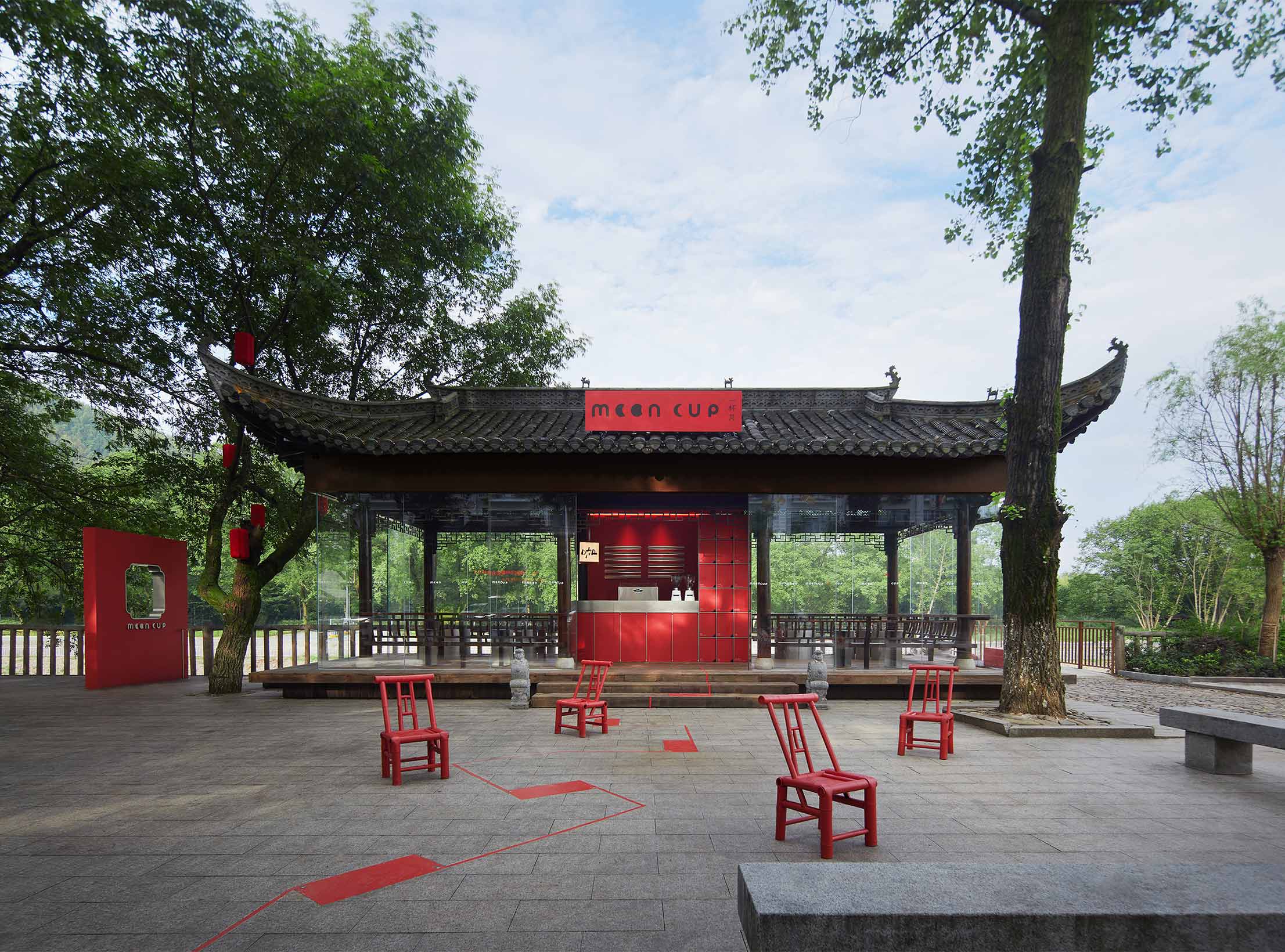
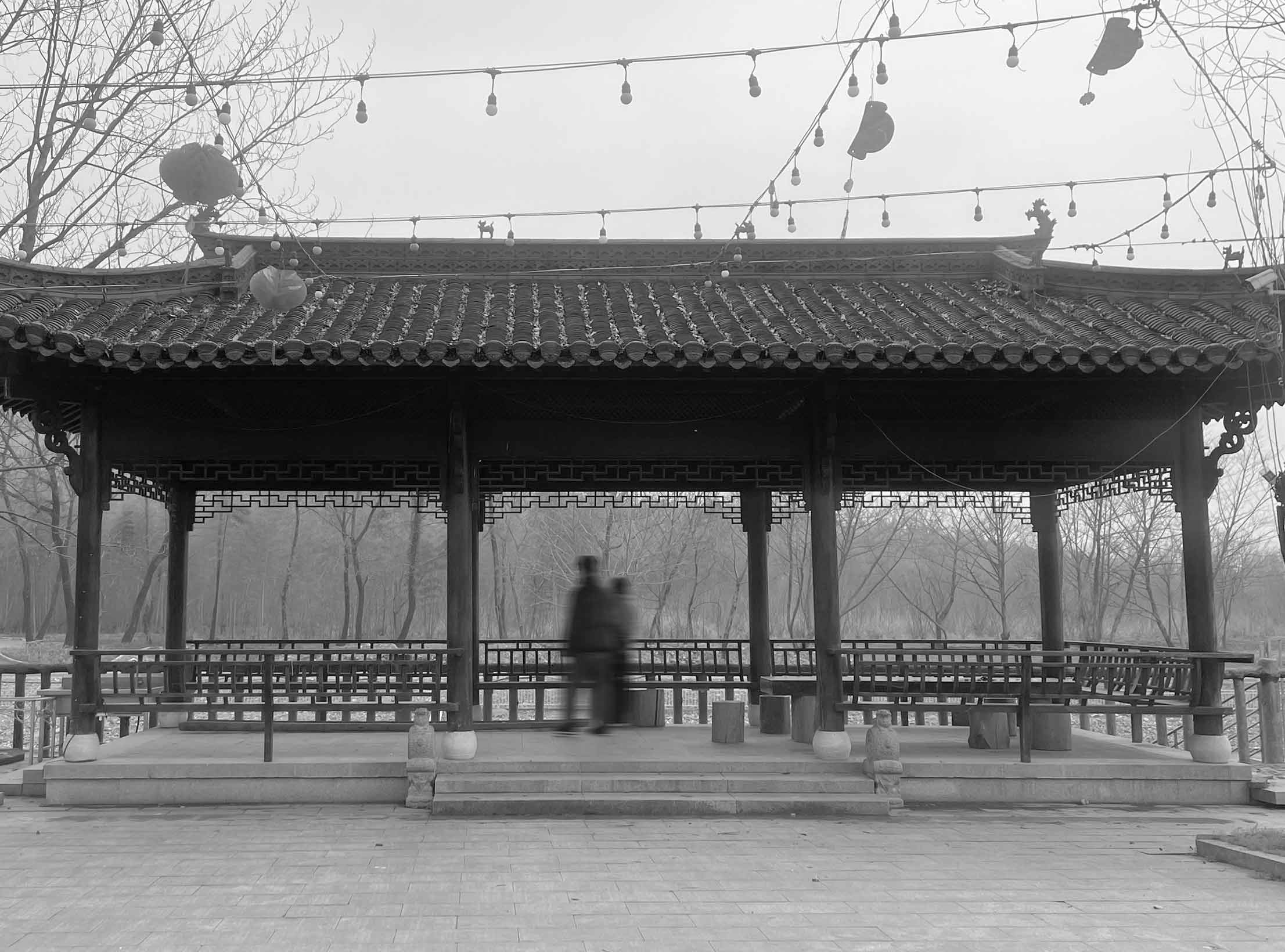
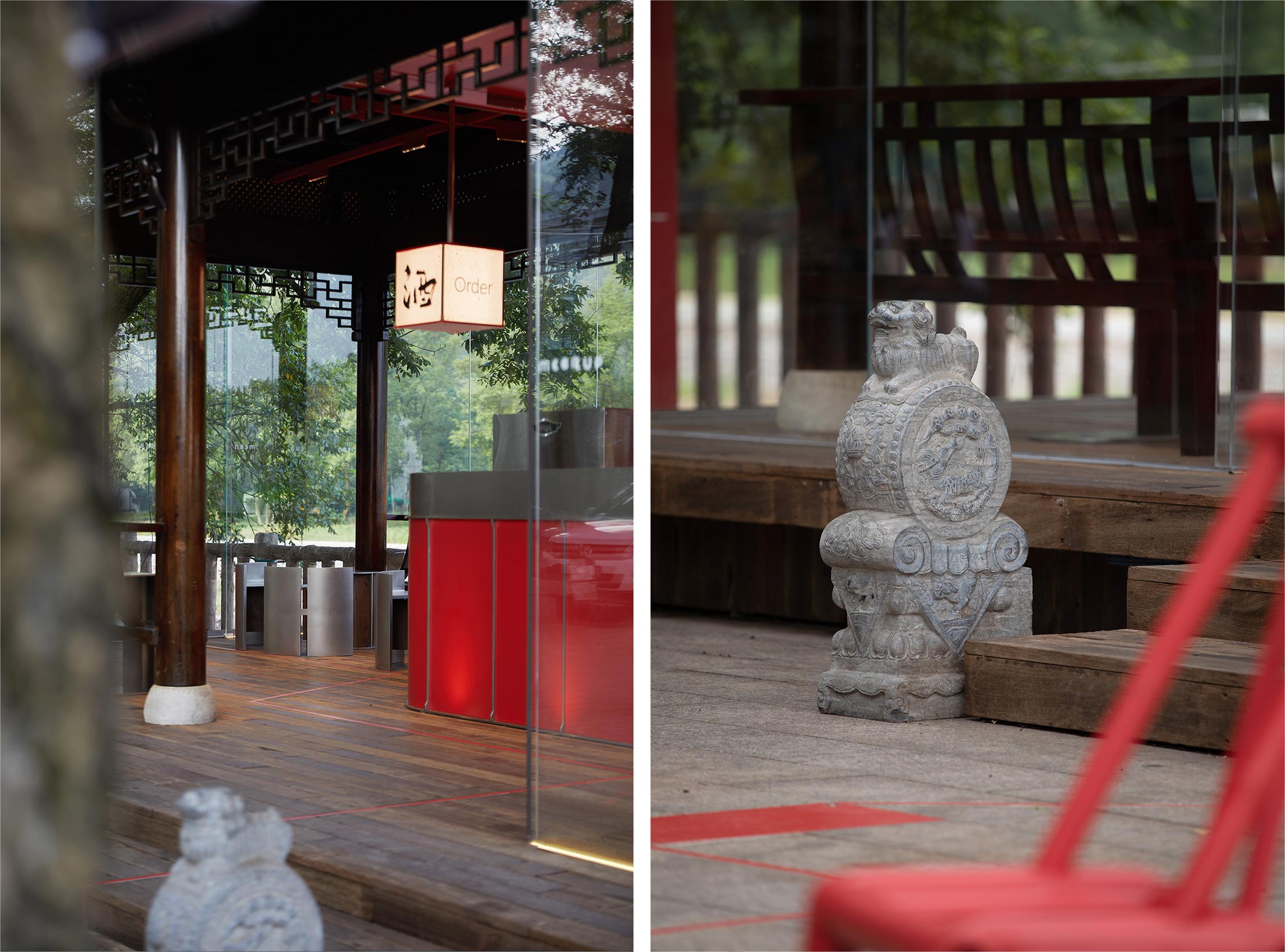
在亭子的中心,我们置入了一个具有制作咖啡、调酒、收纳、收银等多重功能属性的红色吧台,前置酒柜和右侧景观墙自然围合而成的区域,巧妙地将操作区的繁忙隐藏于景观墙背后,为路过行人呈现了一幅完整景致。侧墙的开窗设计,灵感源自徽派建筑中的如意纹格窗,半开启的形式,让服务人员在忙碌之余能随时关照到客座区的动态。酒柜门上印有宣城著名景点的字样,通过月亮形状的扣手可将其打开。在夜晚,柜门和内置灯膜开启,展示出业主精心收藏的美酒,空间的业态氛围随之发生变化。吧台上方的可旋转灯光装置,选用了宣城特色—宣纸作为灯内膜材质,通过转动灯光装置和墙上长条月形装置月缺面、月满面的方向,实现日咖夜酒的模式切换。
In the centre of the pavilion, there is a zone which is naturally enclosed with the front wine cabinet and the right landscape wall, in which we set a red bar counter with multiple functional properties such as coffee making, bartending, storage and cash register, cleverly hiding the busy operation area behind the landscape wall, and presenting a complete view for passers-by. The windowing design on the side wall drew inspiration from the Ruyi lattice window in the Hui-style architecture, and its semi-open form allows service staff to keep an eye on the dynamics of the guest area even if they are busy.The information of Xuancheng's famous scenic spots is printed on the door of the wine cabinet, which can be opened via moon-shaped handles. At night, the cabinet door and the built-in lamp film will be opened, displaying the proprietor’s exquisite collection of fine wine, and the business atmosphere of the space will also change with the scene. Selecting xuan paper - a featured product of Xuancheng - as the lamp inner film material, the rotatable lighting device above the bar counter realizes the mode switch between daytime coffee and night bar by rotating the lighting device and the direction of quarter moon and full moon on the rectangular moon-shape device.
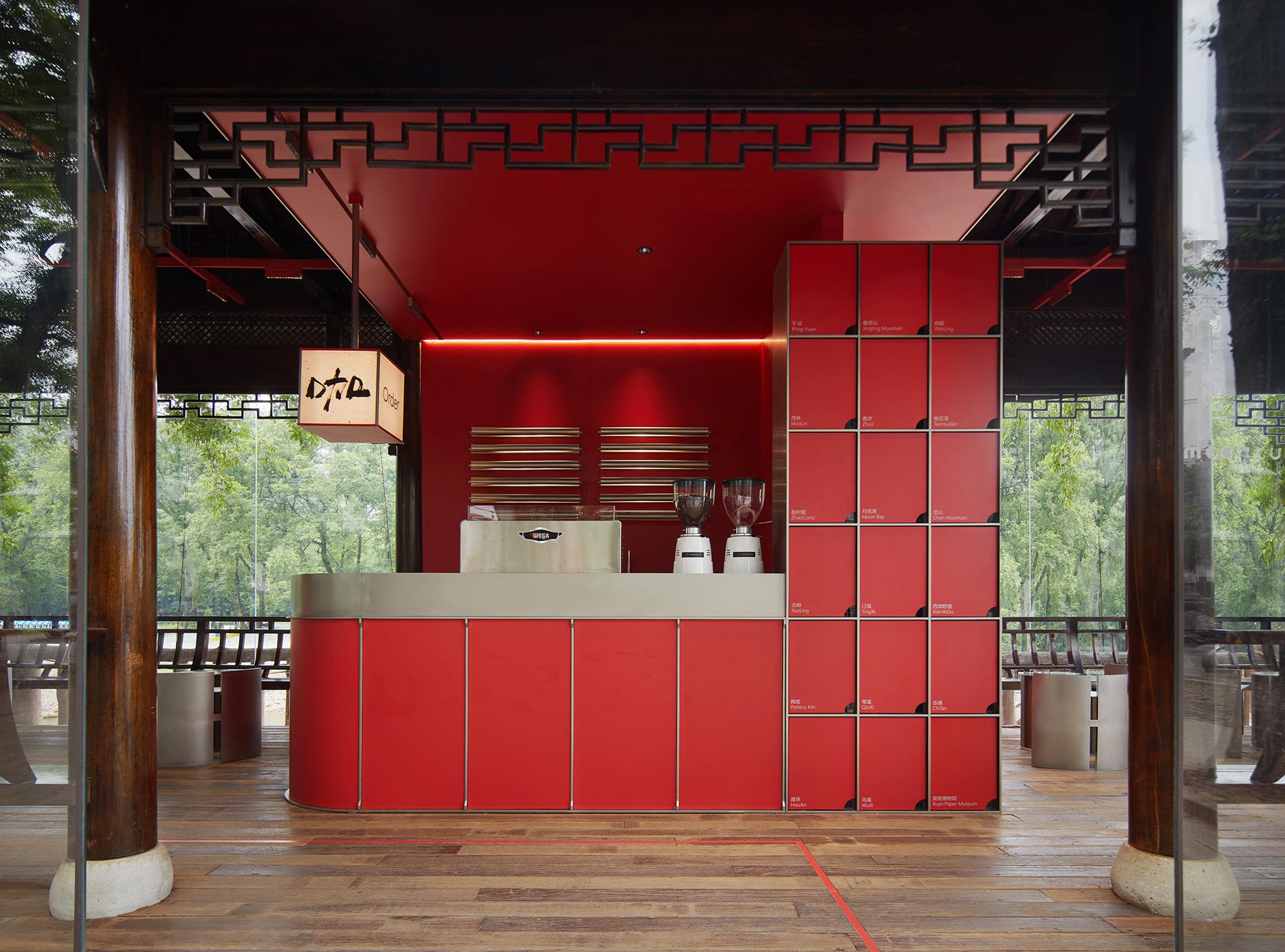
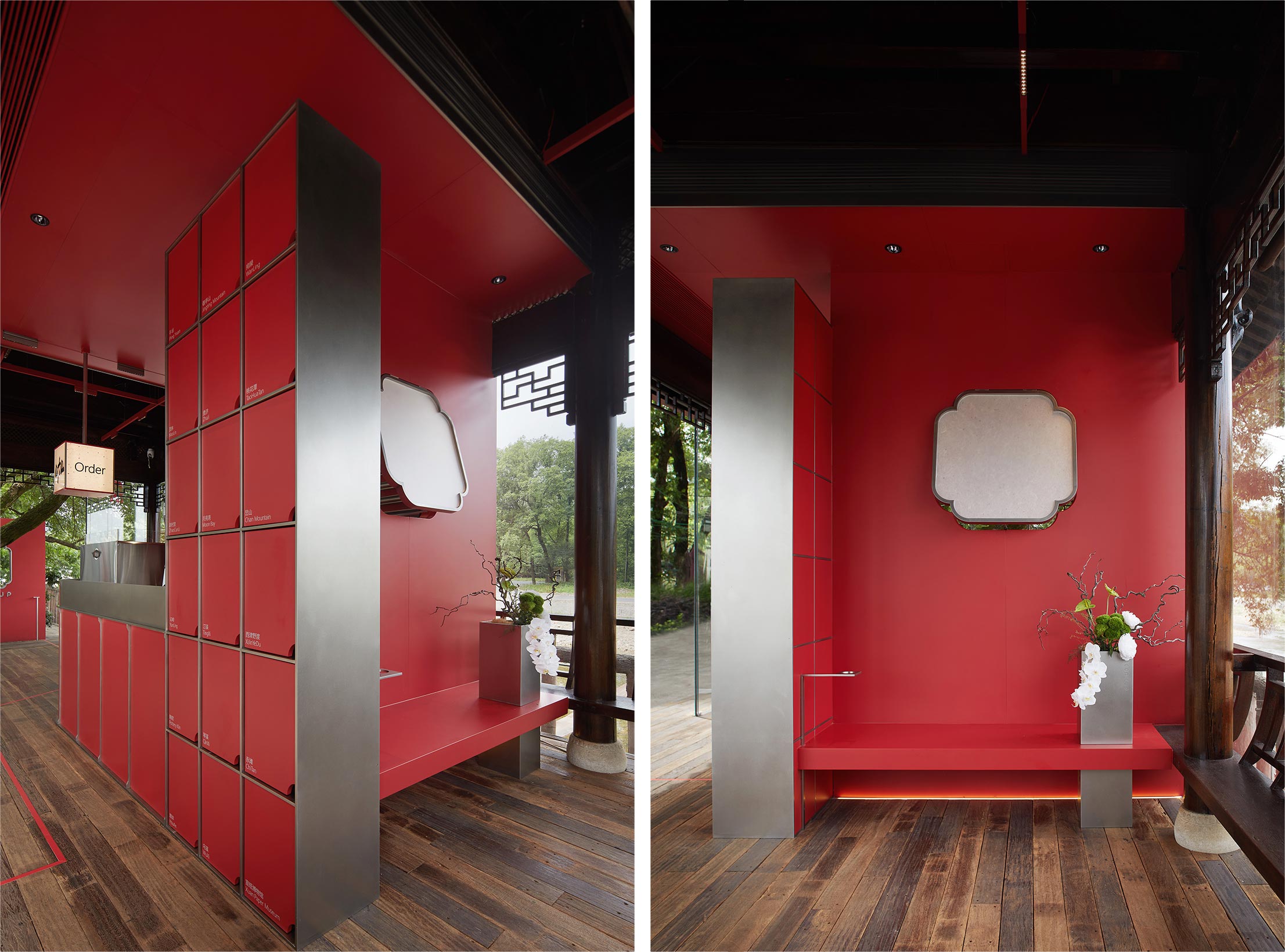
亭子与主干道直线距离约14m,我们在地面以月亮湾河流形状做路径导视,连接道路、广场与亭子,并加入红砖和内嵌地灯的细节,让通往亭子的路径变得更加清晰。桌椅的设计灵感源自月相的变化,椅子可通过自由组合或拆分,适应不同的场景需求。餐桌号牌同样以月相命名,与MOON CUP(一杯月)店铺名字相呼应。外部红墙作为空间的端景,将亭子与广场上的其他业态分隔开,形式上沿用内部打卡墙的开窗设计,让视线自由穿透缓解实墙带来的闭塞感。我们将亭子咖啡店的招牌设计在斜顶的上方,与多功能吧台呼应,营造出一种空间冲破束缚的视觉效果。通过设计,亭子成为了月亮湾景区的新地标,居民和旅客或居于亭内,或坐于檐下,与亭子一同感受四季分明的宣城。
The straight-line distance between the pavilion and the main road is about 14m. On the ground, we use the river shape in Moon Bay as the path guidance to connect the road, square and pavilion, and add the details of red brick and embedded ground lamp, making the path to the pavilion clearer.The design inspiration of tables and chairs comes from the changes of the lunar phase, and the chairs can be freely combined or split to adapt to different scene needs. The table number is also named after the phases of the moon, echoing with the store name “MOON CUP”.As the side view, the exterior red wall separates the pavilion from other businesses in the square. Its form follows the windowing design of the internal check in wall, which allows our sight lines to penetrate freely to alleviate the occlusion feeling brought by the solid wall. The shop sign of the coffee cafe in the pavilion is designed above the slopping roof, echoing with the multi-functional bar, creating a visual effect that the space breaks through the shackles.Our design made the pavilion become a new landmark of the Moon Bay scenic area. Staying in the pavilion, or sitting under the eaves, together with the pavilion, the residents and tourists can come here to feel and appreciate Xuancheng, a city with four distinct seasons.
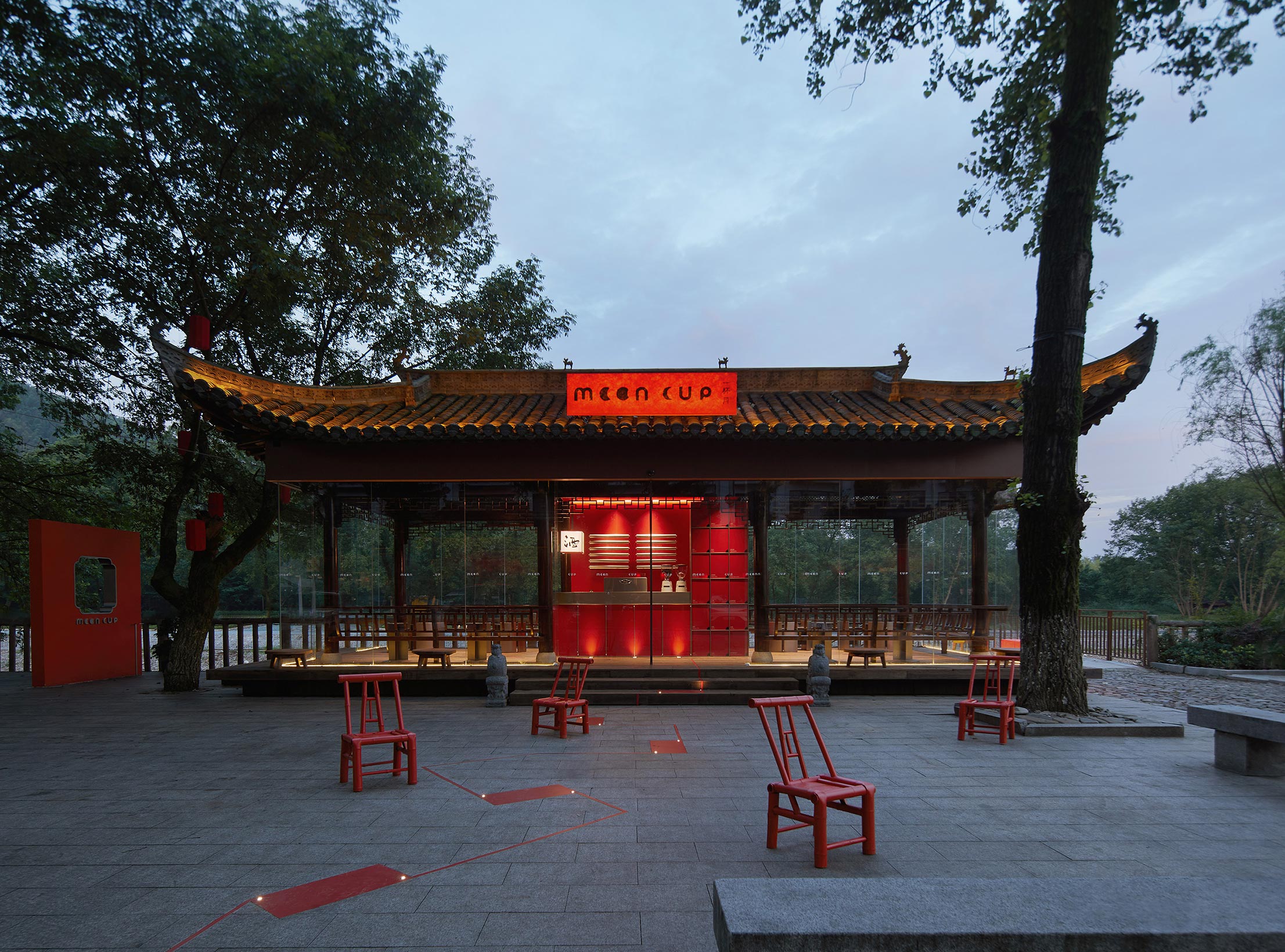
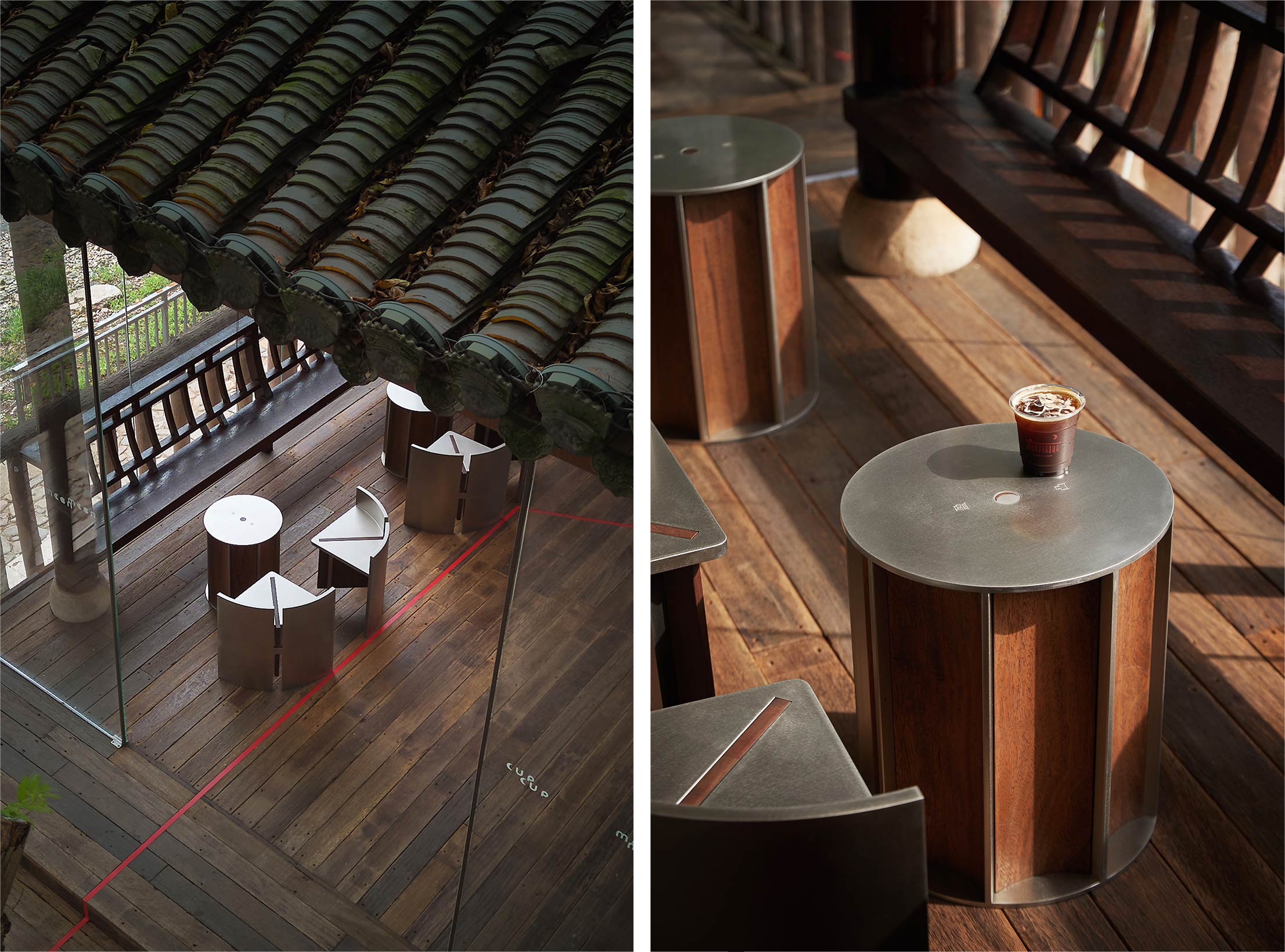
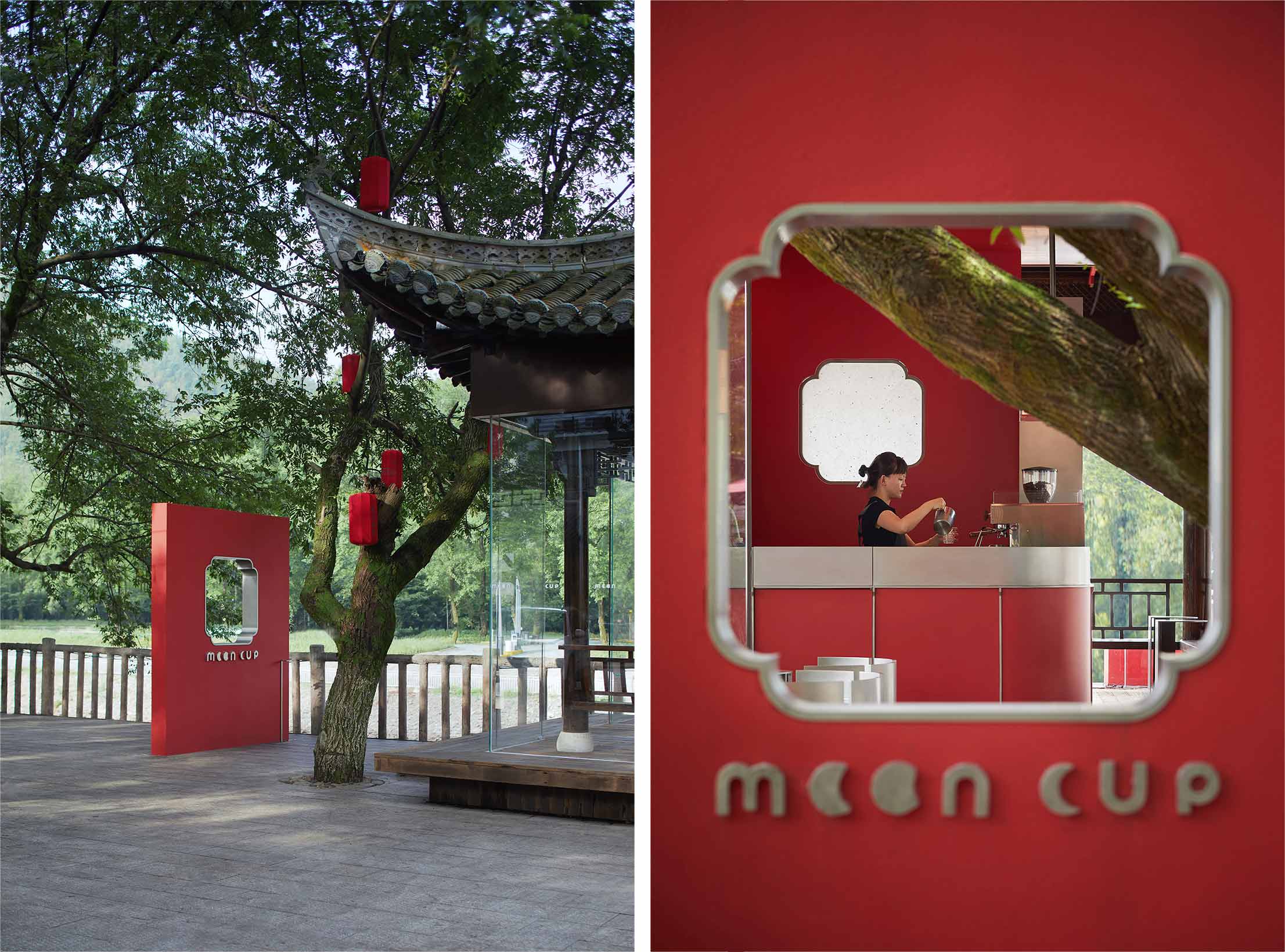
项目面积:40㎡
项目类型:Business
设计时间:2024

